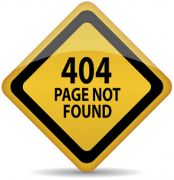 It is quite common to see "404 Not Found" page instead of the requested one. This is a standard status code, informing the client that the server has not found anything matching this precise URI (short for Uniform Resource Locator). In other words, that is what you get when the server is not able to find the page you are trying to load, due to one reason or another.
It is quite common to see "404 Not Found" page instead of the requested one. This is a standard status code, informing the client that the server has not found anything matching this precise URI (short for Uniform Resource Locator). In other words, that is what you get when the server is not able to find the page you are trying to load, due to one reason or another.
This status code is commonly used. However, it is not the only error code you might get. 404, along with other 4xx status codes, is a client-side error, meaning that the user either misspelled or requested a page that is no longer there. On a different note, status 200 is the most common server reply you get. You don't see it because the request succeeded to display the requested resource.
Unlike other HTTP status codes, the 404 has a background story. Way before Tim Berners-Le first introduced the idea for the World Wide Web in 1989, the archetype of the the web existed in a closed environment, representing CERN's internal network. Its functionality depended much on manual processing executed by several operators. CERN's database was located in an office on the forth floor (room 404) where all requests for resources were received. In time the database grew and the number of requests increased. Simultaneously the number of requests that could not be completed began to increase, due to people who requested a non existing file. Such requests received reply stating 'Room 404: file not found'.
Nowadays, such requests are automated but the error message remains fairly the same, honoring the pioneer days of the web. You can check the status code on any resource on the net, by using our free HTTP headers test tool. What today is a simple check, once was a 9-to-5 occupation for some.


 Copyright 2000-2025, WebSitePulse. All rights reserved.
Copyright 2000-2025, WebSitePulse. All rights reserved.